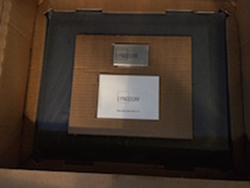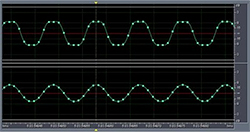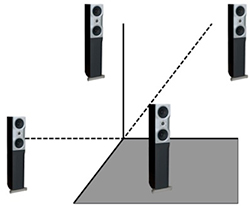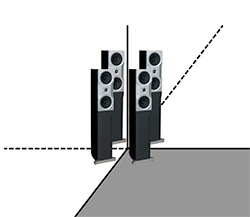Lyngdorf Audio TDAI-2170 Fully-Digital Integrated Amplifier Review Highlights
Integrated amplifiers have never enjoyed the same respect audiophiles pay to separate components. Similarly, Class D amplification has been the “Scarlet Letter” of the high-end audio realm due to a sea of mass-market amplifiers that make more “noise” than “music”. Borrowing heavily from technologies developed for the cost-no-object Steinway Lyngdorf audio systems (yes, THAT Steinway) the TDAI-2170 aims not to simply level the high-end audio playing field, but to flip it on its head entirely. Fundamentally different from traditional Class D amplifiers, the sleek TDAI-2170 produces a sound so clean, so neutral, so devoid of any sonic signature, it disappears completely and restores the emotional response that made me fall in love with music to begin with.
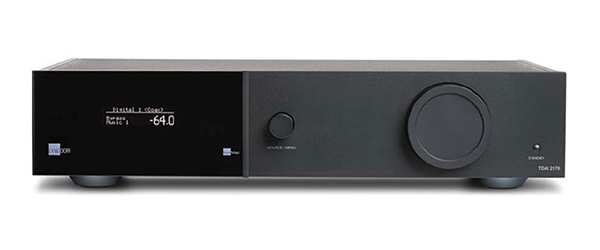
Lyngdorf Audio TDAI-2170 Fully-Digital Integrated Amplifier Highlights Summary
- Fully-digital, unbroken signal path maintains audio integrity which, according to Lyngdorf Audio, has no negative feedback loop
- “RoomPerfect” room correction software is incredibly easy to use and produces an immediately noticeable improvement in sound
- “Intersample Clipping Correction” combats the “Loudness War” and restores the lost fidelity at the cost of slightly decreased volume overall
- Modular design allows for adaptation to any listening environment
- Simple, intuitive interface makes navigation easy and customization a snap
- Completely disappears in any system, letting the music speak for itself
- “Blackground” – the most silent background of any audio component, of any type, at any cost
Introduction to the Lyngdorf Audio TDAI-2170 Fully-Digital Integrated Amplifier Review
There are many, many among us who have been charmed by convenience while unknowingly slowly sacrificing quality. I have seen seasoned audiophiles poke fun at those of us who insist on having our music wherever we go, claiming soon those individuals will no longer be able to differentiate between music and hitting a bucket with a wet mop. I take some issue with this point of view because I love music, and I love it with me, 24/7.
I firmly believe the vast majority of individuals with white earbuds attached to their external auditory canals, can very much indeed tell the difference between higher and lower fidelity sound, they’ve just never had the opportunity! Enter Lyngdorf Audio’s new, fully digital integrated stereo amplifier, the TDAI 2170. Priced as a quality midlevel component, Lyngdorf Audio aims directly at the “iPod Generation” with a clean, adaptable user interface and uncompromising technology packaged in an elegant, familiar design. In Lyngdorf Audio’s attempt to show a new generation of 20- and 30-somethings how music is meant to be heard, they created a component so well executed it also lays waste to many so called “high-end” components costing multiples of its price.
LYNGDORF AUDIO TDAI-2170 FULLY-DIGITAL INTEGRATED AMPLIFIER REVIEW SPECIFICATIONS
- Design: Fully Digital Integrated Stereo Amplifier
- Power Output: 2 x 170W into 4 Ohms
- Peak Output Current: 30A
- THD+N: 0.07% at Peak Output
- MFR: 20-20kHz +0.3dB /- 1.5dB
- Inputs: 2 x Analog Single Ended, 2 x Coaxial Digital, 4 x Optical Digital, 4 x HDMI 1.4a (w/module), 1 x USB (w/module), 1 x Balanced XLR (w/module)
- Outputs: 1 x Insulated Stereo Binding Posts, 1 x Coaxial Digital
- Dimensions: 3.9” H x 17.7” W x 14.2” D
- Weight: 17.6 Pounds
- MSRP: Base: $3,999 (As tested: $4,999)
- Lyngdorf
- SECRETS Tags: Lyngdorf, Digital, Integrated, Amplifiers, Stereo, Lyngdorf Audio TDAI-2170, Lyngdorf Audio TDAI-2170 Fully-Digital Integrated Amplifier
Design of the Lyngdorf Audio TDAI-2170 Fully-Digital Integrated Amplifier
Aesthetics
I cannot remember ever giving the packing of an electrical component much thought. Most modern electronics come well packed with plenty of molded Styrofoam, plastic sleeves, and double boxes to prevent noticeable damage to the contents. When the TDAI-2170 arrived there was not the usual small shift that one hears when something heavy is surrounded by Styrofoam and moved about; opening the outer box revealed its silent secret. The integrated amp was suspended between two sheets of clear, thick (and quite resilient) plastic film, not unlike a thick version of kitchen plastic wrap. These two sheets were themselves each attached to a cardboard square frame that occupied the perimeter of the box, each ½ the box’s height, positioning the two films as a “sandwich” of sorts.
This rather unusual design resulted in the 18lb integrated amplifier “floating” inside the outer box with several inches between it and the nearest side. The plastic film acted similarly to a rubber band to dampen any shock the unit incurred during transit. In speaking with Claus Glaesner, CEO of HTP USA and head of US distribution for Lyngdorf Audio, apparently in transit the TDAI-2170 can fall from 8 feet and land on any surface, at any angle and not sustain damage, physical or otherwise. Little did I know this seemingly unnecessary, but clearly over-engineered detail would serve as a prelude to the dogma of Lyngdorf Audio.
The chassis itself feels overbuilt and bombproof solid. Think Sherman tank construction with Ferrari finish. Needless to say, the TDAI-2170 feels quite substantial given its rather compact size.
Lyngdorf Audio calls the TDAI-2170’s design “modern Industrial” composed of matte black aluminum and black glass.
I call it clean, simple, and sexy! Its design keeps in step with previous Lyngdorf Steinway products. If you are unfamiliar their designs, it has a similar aesthetic appeal as Bang and Olufson or even Apple.
The face is clean and elegant, and unlike many components laden with rocker switches, dials, and buttons, the TDAI-2170 only two dials that adorn the face, one fairly small that serves to select the input and the other rather large (spans nearly the entire height of the chassis) to control the volume. Much like the ingeniously designed packing, the volume control was not simply produced, but feels crafted, like someone actually cared what it felt like when you turned it. The dial has weight and inertia to it, with a smooth glide – no “steps”, clicks, or cheap, hollow knobs here my friends! The use of just two dials also felt very familiar; it reminds me of an iPod of sorts.
Initially, the display was fairly unreadable from traditional listening distances, and I must not have been the only one to call the company about this seemingly small (pun fully intended), but functionally important detail. Not long after I asked Claus about this, a software upgrade was released which corrected this. Users will rejoice in knowing updating the software was exceedingly easy to do; no connecting to the Wi-Fi, no running Ethernet to the chassis, simply download to a USB flash drive and plug it into the back! The TDAI-2170 recognizes its update files and automatically extracts and installs them.
Functionality
From a functionality standpoint, the TDAI-2170 is modular, expandable and customizable. Rather than taking the all too common approach of saying, “Here is what you need.” Lyngdorf Audio chose the high road and instead asks, “What do you need?” The TDAI-2170 is available with several options so the listener can truly add only what he/she needs.
The “stock” TDAI-2170 comes with all the internal software, inputs and outputs one would expect from a two channel integrated amplifier, with digital and analog inputs, well-built 5-way binding posts, etc. However, should the need/desire arise, there are an additional three modules that can be ordered with the TDAI-2170: an audiophile USB board, an HDMI board, and a high-end analog board.
Arguably the most useful of the trio is a USB (type B) input. This allows the user to then connect the TDAI to any digital audio source, streaming device, or directly to one’s computer for playback high-resolution audio. With the USB board, the TDAI-2170 will handle up to 32-bit resolution and sampling frequency up to 384kHz. It will also handle native 2.8MHz and 5.6MHz DSD content as well (DSD64 and DSD128 respectively). I found this input was nearly essential, as all of my hi-resolution audio files are stored on my computer and the cable made for a “no muss, no fuss” connection. Keeping with the unbroken digital path mantra, this connection did indeed produce the best sound from the TDAI-2170.
With the optional HDMI 1.4 board installed, the TDAI-2170 becomes a ridiculously adept control center for an existing complete system as well. This module brings with it 4 HDMI inputs and an output enabling you to connect a Blu-ray player, satellite/cable box, and media player (with an additional input for whatever else you may have) with only one cable going to the TV. It is fully CEC and ARC compatible as well.
In an interview with Flemming Smith, Sales Director for Steinway Lyngdorf, I asked, “Why the inclusion of an HDMI module?” It almost seems a bit sacrilegious to add a video module to not just any audio component, but a dedicated TWO-CHANNEL audio component! Gasp!
Flemming’s first comment was on the HDMI cable itself, “HDMI is NOT just for video! It has some of the best audio transmission capabilities of any cable today.” His second comment struck a chord with me, “Today its all media . . . our TV finds radio stations and we watch movies on our phone; it is no longer divided into music, radio, TV, etc. This newer way of thinking creates an interactive experience. The user can determine if the TDAI will be used for high end two-channel audio or as an elegant receiver.” He was right. The traditional idea of what brought us music versus video is no longer entirely correct. I use my TVs more or less as the GUI to access data, regardless of whether or not the end result is video.
Flemming also commented that with the TDAI-2170, you no longer have to spend additional money on speakers if you already have a sound bar. Lyngdorf Audio has included their proprietary room correction software, “RoomPerfect”, with the TDAI to ensure it plays very nicely with sound bars and makes them sound at their best, despite being placed in traditionally “bad spots” (i.e.: flat against a wall and frequently at less than optimal height).
The third available module is a high-end analog input board. It has three sets of RCA right and left inputs, which while nice, on their own does not warrant the additional cost of the module, but what does is a set of fully balanced XLR inputs. Now your turntable and phono amp can join the party.
I thought this was a particularly wise move on Lyngdorf Audio’s part, rather than just focusing on bringing the iPod generation into the high end audio world they chose to be inclusionary rather than exclusionary. “We wanted to make sure you could hook up ANY source to the TDAI-2170 and it could handle it. And since some of the best source material is in the analog domain, we wanted to be sure to include the ability to handle this format.” said Claus during one of our discussions.
The TDAI-2170, as the name suggests, puts out 170 watts per channel to two channels into 4 Ohms with both channels driven. Although it is technically a “Class D” amplifier, it would be a mistake to assume this is simply a high-end version of a traditional “Class D” amplification.
The topography of the Lyngdorf Audio TDAI-2170 is true “fully-digital” amplification, not traditional class D. In the TDAI-2170 (using digital inputs) the signal never leaves the digital domain until the final output stage where it converts the PCM signal to PWM output, a relatively simple task.
Many of our readers are well versed in the various modes of amplification, but for those who have not committed our Secrets Primer on “Amplifier Class of Operation” to memory, here is a brief introduction to class D amplification. I feel it is of great importance to understand how the Lyngdorf Audio TDAI-2170 is fundamentally different from other class D amplifiers.
First, class “D” amplification does not stand for “digital” amplification; although this misnomer has worked its way into our culture so thoroughly I hear it in almost every audio discussion and see it on nearly every audio blog/board. “D” simply happened to be the next letter in the alphabet when it was being defined as a type of amplification. (Yes there is a class “C”, but it has characteristics that make it unsuitable for audio signal amplification and finds most of its use in radio frequency amplification realm.) Class D amplifiers are also referred to as “switching” amplifiers, meaning the transistors (commonly MOFSET) in the amplifier operate as switches (fully “on” to fully “off”) instead of linear gain devices, as in analog audio.
Second, “digital” amplifiers (with very few exceptions) aren’t totally digital. They actually receive their signal in analog form, then convert it to digital so it can be manipulated/tweaked/caressed, converted BACK to analog, amplified, and sent to the speaker terminals. The more the signal is manipulated, the less and less it sounds like the original signal. Since we really only want the original signal amplified, this causes some problems.
While there are many faults inherent to class D amplification, I will limit this discussion to the largest faults, as there are books dedicated to the subject. In broad strokes, the timing of the switching in class D amplification is the largest source of audible problems, with “dead time” being particularly guilty. Dead time is the time when both the + and – transistors are “off” and no signal is conducted. Dead time in the tenths of nano-seconds can generate in excess of 1% Total Harmonic Distortion (THD). Moving from 40ns dead time to 15ns dead time can drop the THD from >2% to <0.2%; clearly dead time needs to be as short as possible to create an accurate, low-distortion output signal.
So a faster clock would be highly desirable? Yes, up to a point. If the switching is faster than the actual transistors can move between fully on and off, you run into the transistor being switched off still conducting when the transistor being switched on starts conducting – resulting in a short.
As I alluded to above, timing also plays a role in the transistors themselves. The amount of time each transistor spends going between fully “on” to fully “off” can adversely affect the sound and greatly shorten the life of the amplifier itself. This transition creates a state in which each transistor has significant resistance, which produces significant heat. Because class D amplifiers were not designed to handle excessive heat, this can cause significant damage to the circuitry.
But better timing in amplifiers, much like in its wrist bound brethren, is not cheap, nor is it the best way for mass marketed class D amplifiers to deal with high THD.
Far and away the most popular method of dealing with some of these inherent errors and improve the noise of the amplifier is by the use of a negative feedback loop. Negative feedback is a method used to correct for the non-linearity of an amplifier by feeding the output waveform of the amplifier back into the input stage enabling the internal circuitry to correct for deviations caused by the pulse-width modulator, output stage, supply voltage, or any internal source of audio distortion. As more and more negative feedback is generated, the THD drops further and further. This sounds like a great idea, and it is . . . to a point. Unfortunately this also amplifies higher order harmonics that may not have been audible previously but now are able to be heard. So while the specs may show an unbelievably low THD, the amplifier itself does not sound anywhere close to perfect; a classic example of theoretical perfection resulting in real world failure.
To Lyngdorf Audio’s credit, rather than providing a mechanism to compensate for inherent problems with mass-market class “D” amplifiers, they went to the source of the problem(s) . . . and there are many.
According to Lyngdorf Audio, they have developed a circuit architecture that is free of global feedback.
For starters, the internal clock used in the TDAI-2170 runs at 400kHz, not just several multiples of the oft used 20kHz (supposed upper range of human hearing), but more than an order of magnitude bigger! This combined with custom, high quality (not to mention fast) transistors nearly eliminates the biggest source of distortion, timing. They also isolate each component to limit the impact each has on the other. Because of this quality of design and build, the TDAI-2170 has NO feedback, and thus no need for a feedback loop! Thus the proverbial dog can stop chasing its tail.
To demonstrate this lack of feedback, Claus eventually convinced me to do something against all reason. He wanted me to have the TDAI-2170 actively running a signal, press “stop”, put my ear up to the speaker, and quickly turn the volume all the way up. After a brief moment of being convinced I had just gone deaf, I realized what had happened . . . because the TDAI has no internal sources of noise, when there is no signal being amplified there is simply, nothing. This example illustrates the (very near) technical perfection of the TDAI-2170 as an amplifier and serves as the backdrop to one of the best, most enjoyable, listening experiences I have had.
Lyngdorf Audio also recognizes the importance of combatting the “Loudness War.” Not only does this phenomenon result in crazy volume swings between different tracks, but also degrades the music itself. All converters, DA, AD, or otherwise cannot process signal above 0dBFS, and that information gets clipped (not included in the output signal). To prevent this loss of audio information Lyngdorf Audio employs “Intersample Clipping Correction” software. When the TDAI encounters a signal that extends above 0dBFS, it upconverts it to 200kHz, identifies what peak should be there, calculates it and restores it. The TDAI-2170 then reduces the loudness of the entire track by the difference between the peak that WAS clipped and 0dBFS. All of that happens in real time before the signal reaches the amplification stage.
The top bar in Figure 4 shows the clipped output waveform produced in other converters and the bottom shows the TDAI-2170’s reconstructed waveform with the entire audio signal intact, but with an overall reduced amplitude (volume).
I did notice a slight but perceptible decrease in volume overall during my time with the TDAI-2170. In my interview I asked Flemming if he thought listeners would initially be turned off due to the apparent loss of volume. He chuckled a bit and replied, “The reduction in overall volume is not noticeable to most people, but the reduction in compression is noticeable to almost everyone.” It may have been for kicks, but Lyngdorf Audio included a setting on the TDAI-2170 where it would display how clipped the audio signal was before processing, which I found strangely entertaining.
Setup of the Lyngdorf Audio TDAI-2170 Fully-Digital Integrated Amplifier
While I have not personally set up many integrated amplifiers, the ones I have did not have room correction software. In my mind room correction software was always associated with multichannel audio, which required a receiver or pre/pro, most of which come with the latest flavor of Audessy, Dirac, ARC (in Anthem’s case), etc. I always figured you wanted your main speakers to sound their best in a given room you would move them and tweak them until you found the best position for them. Or at least this is what I have done for two-channel audio.
Lyngdorf Audio recognizes two very important and nearly universal truths: 1) 99% of the time we cannot control the dimensions of the room or what it is made of, but can control where the speakers are placed (to varying degrees) and 2) the room around the speakers probably has the largest impact on the sound heard (except for the speakers themselves). So while performing room correction measurements is not a new thing for me, performing them for a dedicated 2-channel system is.
The room correction software the TDAI uses is called “Room Perfect”, and claims to make your speakers “sound exactly as the manufacturer intended them to, not the way your room’s limitations make them sound.” A bold statement to say the least. Before I had actually used the “RoomPerfect” correction software I was skeptical at best; sure it could be good or even great, but perfect? In a discussion with Claus Glaesner over the name “RoomPerfect” he commented “We didn’t name it “RoomGood” or “RoomBetter” because it isn’t! It’s perfect!”
To achieve said sound, there is only one prerequisite (and one I’m sure most would actually like): place your speakers as close to the wall as possible to reduce the delayed reflections from walls. According to the Lyngdorf Audio website, “whether used with full range, satellite, in-wall, or on-wall speakers, the TDAI-2170 is the perfect choice for any brand or model on the market. Because of its unique technologies, the long-contested challenge of speaker placement no longer compromises performance. On the contrary. Simply place your speakers up against the wall to get the least amount of damaging reflections. From there, RoomPerfect will adapt the speaker to the room and remove any unwanted bass boom.”
The theory is the fewer delayed reflections around the room, the easier it would be to account for them in the software. Even without taking the test microphone out of the box I knew I already had a problem. My reference speakers are a pair of highly upgraded VonSchweikert VR-7SE MK2’s; they are so modified the model ID plate reads: “VR-7SE MK3 #001”. Albert VonSchweikert originally built the pair for himself, but did not meet the WAF (Wife Acceptance Factor). While his modifications made for mind-bending audio, they also made for rather heavy (~500lbs each) and rather stable (spiked to my home’s foundation) speakers. And while I could not move them against the wall (or anywhere without some serious help for that matter), I could turn off the rear ambience driver. As I mentioned before, for two channel listening I had found the ideal spot for my speakers and assumed I would not have to move them to any significant degree . . . ever.
The TDAI-2170 includes a microphone and cable as most companies do for taking room measurements, but that is where the similarities end. The microphone is an honest to goodness real calibration microphone one might find in a professional calibration kit. The provided cable is a balanced XLR cable, not just a long version of cheap headphone cables typically supplied. Audiophiles rejoice! As if that were not enough, Lyngdorf Audio also included a professional microphone stand, a welcome treat from having to find your camera’s tripod (if one even exists) and finagle the individual legs to accommodate being on a couch, over a table, on the floor, etc.
All this is to say Lyngdorf Audio is serious and cares a great deal about the sound you hear from their products, and believes the process for obtaining said sound should be as clean as possible. The actual room calibration was the simplest and fastest I have ever performed. The calibration requires you first to choose a single position for the microphone as the “focus” position.
For subsequent microphone placements, unlike other software where you are asked to be perfectly quiet and place the microphone in specific locations around the room, here you are asked specifically NOT to care about where it’s placed. In fact, they encourage you to take measurements near the ceiling, the floor, high, low, between the speakers, etc. so the TDAI-2170 gets to understand your room, in all its faults. It only took 4 locations to get 95% “room understanding” and 7 to get 99%! Last I checked needed a minimum of 9 locations to get anything close to (what I previously thought was) descent correction for the standard software included in the majority of pre/pros and receivers.
The menu layout in the TDAI-2170 follows suit with the clean mindset used throughout the rest of the component. Care was taken to make common tasks happen with the fewest movements. Switching from “global” room correction to “focus” room correction took two button pushes. Selecting a different input was a simple push on the remote, or turn of the smaller knob on the front of the TDAI-2170. Given the possibility of multiple inputs, Lyngdorf Audio made it easy to rename any of them without having to “drill down” 17 layers of menus, and made it easy to skip over inputs with no connection.
The Lyngdorf Audio TDAI-2170 Fully-Digital Integrated Amplifier In Use
Honestly, I didn’t believe it at first; but after switching back and forth from the TDAI and my reference system (for which I used 20 mic locations to dial in) I can say for two channel audio the TDAI-2170 handily beat my system silly. The main reason for this piece of humble pie has to do with the absence of feedback alluded to earlier.
Many reviewers in both the video and audio realm (myself included) often refer to the absence of color or sound (where appropriate) as the “blackness” of a product, and the blacker the better. As the background gets blacker and blacker (more and more silent), you begin to hear things in familiar recordings you haven’t heard before, or at least couldn’t precisely identify. The Lyngdorf Audio TDAI-2170 was so silent it disappeared from my system entirely! Those readers who follow me on my quest for “audio truth” will recall I carefully choose my audio components to be as absolutely neutral and silent as possible; I want to hear what the artist meant to be heard, not what my system makes it sound like.
I listen to a fairly wide variety of music on a daily basis, so you may notice I do not stick to a single genre when reviewing. What you should garner from this review and the others I write, even if your musical tastes differ from mine, is over arching themes to components rather than specifics relating to any particular track.
Because my system and the TDAI-2170 use different volume scales, I used an SPL meter to ensure I was listening to both systems at the same level in order to avoid simply favoring the loudest of the pair.

One of the more unique groups I like is VAST, a rather esoteric ambient electro-rock band from Austin. The track “Don’t take your love away from me” clearly conveys the size of the space the band recorded in. While the “hollow-ness” of the sound isn’t subtle, it was more real through the TDAI-2170 than I had remembered. The notes from the upright bass came through clearly and its position became more defined. You could actually hear the fingers on the strings, not just the notes. To VAST’s credit, these elements were purposefully placed to add a level of emptiness that make the audience emotionally involved in the song. This was very apparent on the TDAI-2170, more so than on other systems I’ve heard.

I find Madonna’s “Sound of Goodbye” from the 1998 release of Ray of Light to be a very telling track that rapidly reveals a system’s ability to image and create soundstage. I love to play this track for “non-believers” who insist no system can create a truly “believable” soundstage beyond the width of the speakers. My system does this particularly well, so I was already expecting a wide soundstage. As the song began playing through the TDAI-2170, there was a moment my brain thought, “How is this playing through my surrounds?” That instant is when you know you have something special: when you can fool your brain, which knows only the main speakers are connected, into thinking otherwise. However brief that moment may be matters little because the realization that it happened at all is startling and slightly unsettling.

Elizabeth Fraser lent her ethereal vocals to Massive Attack’s “Teardrop”, originally released in 1998 on the album Mezzanine. Her airy notes were haunting, put into perfect space and time by the TDAI-2170. The piano notes were as believable as if one had been in the room and again placed deftly into the soundstage by the TDAI-2170. This amazing detail and clarity layered with the grainy, raw hissing and popping from the background “turntable” made for a rather emotional listening experience.
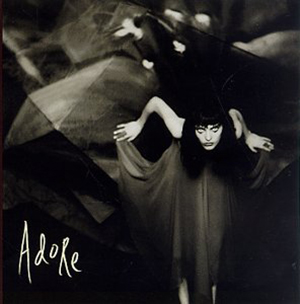
Possibly the most impressive display of the TDAI’s prowess came during the Smashing Pumpkin’s “Appels + Oranjes” off of the 1998 album Adore. “Appels + Oranjes” contains only electronic instruments and front man Billy Corgan’s vocals. I find the tack quite haunting; this is perhaps magnified by the isolation of Corgan’s whiney lyrics, as there is no other “real” instrument to compete with. On the TDAI-2170, I no longer had a track, but a live solo performance! There is a slight drift up and then down in tone as Corgan languishes over the last syllable in the line “It came from your thoughts, your dreams and visions,” that sounded more life-like than I’ve ever heard before. My listening notes very accurately recount the experience: “Speakers disappeared entirely. Very striking. Billy Corgan’s whining voice came through with utmost clarity . . . strangely more real than on other systems.”

Releasing their first full-length album Sirens just this past October, Gorgon City’s English dynamic duo is relatively new on the music scene. The fifth track on the album, “FTPA”, is my favorite for a number of reasons. There are soulful vocals, deep bass, and it finishes with a beautiful trumpet solo. I heard the group perform live at TomorrowWorld 2014 this September in Georgia, and very rarely does a song performed on a small stage, with 11 other stages going simultaneously, stop people in their tracks as this one did.
There is clearly a difference in live music at a festival and the quiet of a recording studio, but it does give you some sort of baseline to go off of. Once again, the TDAI-2170 provided Über-clarity at any listening level, specifically highlighted by the trumpet solo in the last 45 seconds of the track. The miniscule clicks of the trumpet valves as the musician seduces the notes from the brass are ever so quiet, but clearly recorded. This resolution is a direct result of the TDAI’s absolutely black background, thus uncovering these faintest of sounds.
Were there faults to the TDAI-2170? Maybe. On occasion I felt the TDAI-2170 didn’t extend all the way down to the subterranean bass levels my system could dive to, but this was not an easy pickup. Only after listening to the same tack over and over on both systems, and bouncing frequently between them did I notice this. Even then it was limited to a few sequences in the rare track designed to push limits of bass. Some of my dearest friends (with very good ears) did not think there was any difference in bass, and if there was, it was so miniscule it would only be noticed on certain test tracks and only if you were looking for it.
The only other critique I have for the TDAI-2170 is less of a real world issue and more of a testing issue. At 170 Watts per channel, the TDAI is capable of driving most speakers at regular listening volumes with enough headroom to be plenty dynamic. However, when listening to demanding rock or electronica in my theater/listening room (10’H x 15’10”W x 23’D) at concert levels, the TDAI-2170 couldn’t match the dynamics and attack of my reference system. Although at those levels I’m more or less asking, “Can it do this?” rather than enjoying the music. Even then, the music sounded better overall on the TDAI-2170.
Conclusions about the Lyngdorf Audio TDAI-2170 Fully-Digital Integrated Amplifier
At a base price of $3,999, the TDAI is by no means inexpensive. I would however challenge any integrated amplifier (or separates for that matter) to perform at the TDAI’s level in the real world with the clean elegance it pulls off. Claus Glaesner refers to the TDAI-2170 as “High-end audio for the iPod Generation.” I would call it simply “High-end for everyone.”
If I had to describe the TDAI in one word it would be “clean”. The design is clean, the interface is clean, the sound is clean . . . the entire execution of the package is clean. Adaptable would be a close second. Want to run your high-resolution files from your computer? Got it covered. Really wish you could use it as a receiver? Poof! HDMI board. Need to include your turntable and phono with balanced outputs? Done. If it exists in the audio realm, the TDAI-2170 can play it. The “RoomPerfect” software is exceedingly easy to use and provides outstanding results. So good were the results with the TDAI-2170 and its software I used it exclusively when listening to two-channel audio while it was in my possession.
In 2008 Secrets colleague Michael Galvin reviewed Lyngdorf Audio’s SDAI-2175, one of the TDAI-2170’s predecessors, and was amazed at the shear absence of any sonic signature. I think he would happily agree the TDAI-2170 carries this lack of signature to a new level! Rather than re-invent a way to describe the shear silence and profound neutrality the TDAI delivers, I’ll just use his words: “(it) disappears better than most audio components are able to do anything”.
So silent is the TDAI-2170, I highly recommend Lyngdorf Audio look into trademarking the background silence in audio media and rename it “black-ground.” It is truly the most silent background I have ever heard, on any system, of any kind.
In the end, it is really what Lyngdorf Audio eliminated from the traditional Class D amplifier that makes the TDAI stand above others. By going to the source of “noise” in the amplifier and solving each problem individually with no short cuts or bypasses, Lyngdorf Audio has redefined what a “Class D” amplifier should sound like – absolutely nothing.
“Music is the space between the notes.” – Claude Debussy





